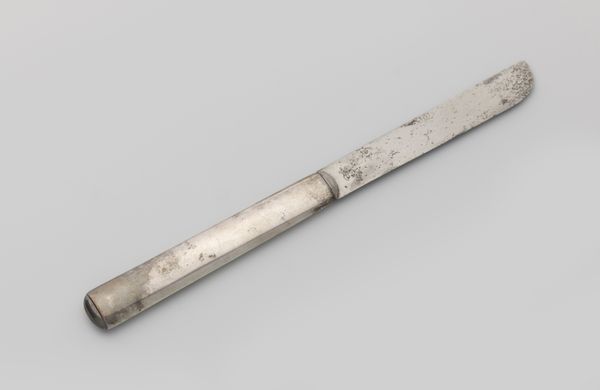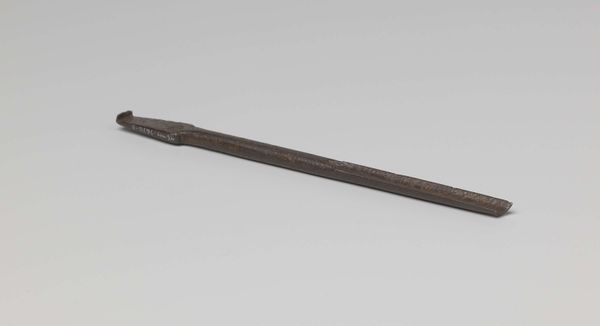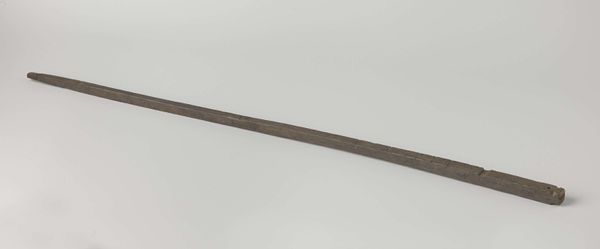
drawing, paper
#
drawing
#
asian-art
#
paper
#
line
Dimensions: height 102.2 cm, width 41.9 cm
Copyright: Rijks Museum: Open Domain
Zhu Henian made this scroll mounting sometime between 1760 and 1834. It’s an envelope, really, made from paper and textile. Consider the paper itself: a seemingly humble material, yet here it's been carefully crafted. We see a soft texture and muted color, qualities born from the fiber selection, processing, and sheet forming. The scroll was then assembled and embellished with strips of labels, presumably naming the work contained within. Think about the labor involved: the growing of plant fibers, the pulping and drying of the paper, the skills of the calligrapher who made the labels. The creation of the scroll is no less a skilled practice than that of painting; it’s a means of preserving and presenting artwork, imbued with cultural value and artistic significance. By attending to these ‘invisible’ elements of art making, we can appreciate the full picture.
Comments
No comments
Be the first to comment and join the conversation on the ultimate creative platform.













